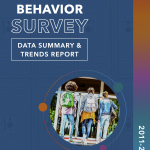A 4-Step Process for Building Student Resilience
 Coping skills are a powerful way for all students to build resilience, self-awareness, and self-regulatory skills as they face the stressors of life. Learning how to positively cope empowers them to be self-reflective and take responsibility for their actions.
Coping skills are a powerful way for all students to build resilience, self-awareness, and self-regulatory skills as they face the stressors of life. Learning how to positively cope empowers them to be self-reflective and take responsibility for their actions.
Michele Lew, a high school special education teacher in the Corona-Norco Unified School District in California, has developed worksheets to help all students identify and manage their stressors.
Lew explains:
In the last few years, I’ve noticed an increase in stress, anxiety, and depression in high school students. The causes range from intense pressure to perform academically to social media expectations and influence to home and environmental issues. The common thread, no matter the cause, is students’ inability to cope with the stressors they experience.
As an educator, my goal is to help students build the resilience and self-awareness they need to be successful in life. After years of working with students with emotional disturbance, I’ve developed self-awareness and coping skills activities that help all students identify feelings and stressors, while also providing them a way to discover positive, self-regulatory coping skills.
Process for Building Resilience
Step 1: Teach students to identify their stressors. It’s important that students learn to identify how they feel and why they feel that way. I have each student identify the things that make them stressed, upset, and sad using a worksheet I’ve developed.
Step 2: Identify what students normally do when presented with stressors. During this step, I tell students to write down their instinctive and initial reaction to each stressor without stopping to think about whether it’s good or bad, or breaks some sort of school or societal rule. Once again, I have a worksheet for them to use.
Students then use a third worksheet to rate their reactions on a Likert scale, where 1 = Worst Reaction and 5 = Best Reaction. I define and discuss each Likert point with my students so they have a clear picture of how to rate their reactions.
Step 3: Brainstorm alternative ways to respond to stressors. During this step, I introduce the idea of coping skills—conscious efforts to minimize stress or conflict in a positive and constructive way. Once students identify their feelings and stressors, it’s important that they learn how to channel their emotions.
Students next revisit their original reaction to a stressor and use the final worksheet to replace it with a more positive coping skill.
Step 4: Practical application and maintenance of coping skills. I build time into each class period for an exercise I call the 5 Minute Fix. For five minutes, students can share how they’ve used their coping skills in real-life situations. They can ask for feedback and advice from peers or provide suggestions to those who are struggling. Most importantly, the community is strengthened by these daily check-ins. Allocating five minutes doesn’t interfere with my academic lessons, and the benefit to students is significant and impactful.
Excerpted from “A 4-Step Process for Building Student Resilience,” from the Edutopia website. Read the full article for additional details and to download PDF files of Lew’s worksheets.
Source: Edutopia | A 4-Step Process for Building Student Resilience, https://www.edutopia.org/article/4-step-process-building-student-resilience | ©2018 George Lucas Educational Foundation
Do you need someone to talk to? CHC can help. We invite you to call or email our Care Coordinators at 650.688.3625 or careteam@testing.chconline.org to set up a free 30-minute consultation.





